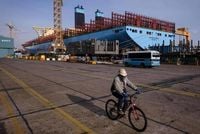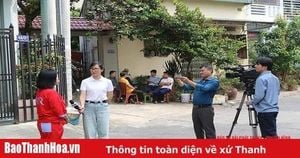Since the beginning of 2025, the United States, under the Trump Administration, has intensified its tariff measures on South Korean exports, further straining one of America’s most significant trade partnerships. These recent tariffs build upon actions initiated in 2018, targeting key sectors such as steel, aluminum, automobiles, and potentially others like copper and semiconductors. The escalating trade tensions come at a delicate moment, with both nations navigating new leadership and complex diplomatic landscapes.
South Korea, Asia's fourth-largest economy and the sixth-largest trading partner of the U.S. in 2024, saw bilateral trade with the United States reach a staggering $242 billion in goods and services. The U.S.-South Korea Free Trade Agreement (KORUS FTA), the second-largest comprehensive U.S. FTA by value, has long underpinned this economic relationship. However, the recent tariff impositions threaten to disrupt this balance.
President Trump has wielded several legal authorities to impose tariffs, including Section 232 of the Trade Expansion Act of 1964, the International Emergency Economic Powers Act (IEEPA) of 1977, and Section 201 of the Trade Act of 1974. The earliest of these, Section 201 tariffs on solar products from South Korea, have been in place since 2018 and are scheduled to phase out by 2026.
In 2018, the administration invoked Section 232 to impose a 25% tariff on steel and a 10% tariff on aluminum imports, citing national security concerns. South Korea, a leading supplier of steel to the U.S., negotiated an import quota in lieu of the steel tariff, but aluminum products were not covered by such an agreement at the time. By February 2025, the administration eliminated all country exemptions from these tariffs, expanded the product scope, and raised aluminum tariffs to 25%. Then, on June 4, 2025, steel and aluminum tariffs were further doubled to 50%, significantly escalating the cost burden on South Korean exports.
Steel imports from South Korea to the U.S. were valued at $2.9 billion in 2024, making South Korea the fourth-largest source for U.S. steel imports; aluminum imports were worth $781 million, also ranking fourth. These figures highlight the substantial economic stakes involved in these tariff adjustments.
Automobiles and auto parts, which accounted for 37% of total U.S. goods imports from South Korea in 2024, have not escaped the tariff storm. In March 2025, President Trump announced a 25% tariff on these products under Section 232, based on a 2019 investigation that had previously not led to tariff imposition due to ongoing negotiations. The President stated that these talks "did not lead to any agreements of the type contemplated by [S]ection 232," and that national security concerns "remain and have escalated." He further criticized the 2018 revisions to KORUS, which were designed to boost U.S. auto exports to South Korea, as insufficient in delivering positive outcomes.
Beyond steel, aluminum, and automobiles, the Commerce Department has initiated other Section 232 investigations since March 2025 into copper, semiconductors, pharmaceuticals, and critical minerals—industries closely linked to South Korea’s advanced manufacturing and technology sectors. South Korean companies have notably increased investments in the U.S. semiconductor and advanced battery industries, both reliant on these materials, underscoring the complex interdependence between the two economies.
Amid these tariff escalations, President Trump declared a national emergency under IEEPA on April 2, 2025, citing "large and persistent annual U.S. trade deficits" attributed to unfair trade practices. This move imposed a 10% tariff on most U.S. imports and a country-specific rate of 25% for South Korea. The U.S. trade deficit with South Korea stood at $66 billion in 2024, ranking as the ninth largest trade deficit for the U.S. However, the country-specific tariff was suspended for 90 days on April 9, 2025, pending further negotiations, with the suspension set to expire on July 9, 2025.
Legal challenges to these IEEPA tariffs have emerged in U.S. courts, reflecting the contentious nature of the administration’s trade policies. Meanwhile, the South Korean government has refrained from retaliatory tariffs, opting instead for diplomatic engagement. In mid-May 2025, both countries agreed to negotiate on six critical issues: the bilateral trade imbalance, non-tariff barriers, economic security, digital trade, and others. South Korean President Lee Jae-myeong’s new trade minister expressed a determination to expedite these negotiations, though no specific timeline was provided.
South Korea has also sought to enhance cooperation with U.S. Customs and Border Protection to combat illegal transshipment of China-made goods, a tactic used by some companies to evade U.S. tariffs. This move signals Seoul’s willingness to collaborate on trade enforcement despite the tensions.
In a significant commercial development, a South Korean airline agreed in March 2025 to purchase $32.7 billion worth of aircraft and parts from U.S. aerospace companies, underscoring the ongoing economic interlinkages between the two nations despite tariff disputes.
South Korea’s shipbuilding industry, a sector historically designated as "strategically important" since the 1970s under former President Park Chung-hee’s industrial policies, is viewed as a potential bargaining chip in these negotiations. The industry has benefited from state subsidies and remains a vital part of South Korea’s heavy industry base. Given its global significance and close ties to U.S. industrial interests, shipbuilding could play a pivotal role in easing tariff tensions.
From an investment perspective, the United States remains the top destination for South Korean foreign direct investment, attracting $22 billion in 2024, which accounted for 34% of South Korea’s total outward FDI flow. This investment landscape adds another layer of complexity and opportunity for bilateral cooperation, particularly in sectors such as semiconductors, advanced batteries, and shipbuilding.
Policy experts suggest that while the tariffs complicate bilateral economic security cooperation, they also open doors to address longstanding non-tariff barriers, including those affecting digital trade. Some U.S. lawmakers have voiced support for strengthening economic ties with South Korea as part of the broader alliance, recognizing the strategic importance of maintaining robust trade relations.
As the July 9 deadline for the suspension of the country-specific IEEPA tariff approaches, both Washington and Seoul face critical decisions. The outcome of their negotiations will not only shape the future of U.S.-South Korea trade relations but could also influence broader geopolitical and economic dynamics in the Asia-Pacific region.
In the end, the unfolding trade saga between the United States and South Korea exemplifies the delicate balance between protecting national interests and fostering international cooperation. As tariffs rise and negotiations proceed, both nations must navigate these challenges carefully to preserve a partnership that has long been vital to their economic and strategic goals.




